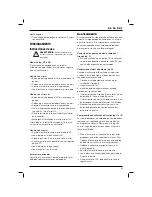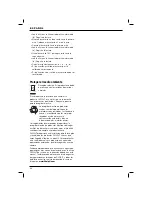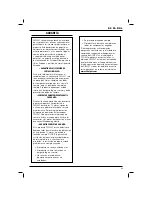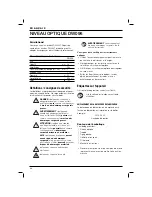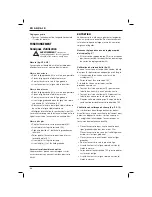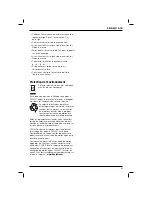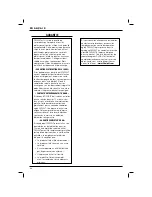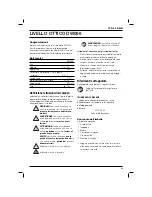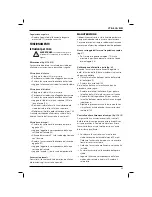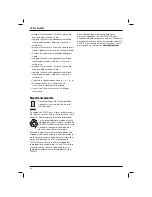
17
E N G L I S H
OPERATION
Instructions for Use
WARNING:
Always observe the safety
instructions and applicable regulations.
Measuring (fi g. G1 & G2)
The attachment is equipped with a stadia reticle to
make the measurements as described below.
Measuring heights
• Extend the grade rod (20) as far as it will go.
• Place the rod near the object to be measured.
• Point the attachment towards the grade rod.
• Read the height at the middle stadia line.
Measuring distances
• Extend the grade rod (20) as far as it will go.
• Place the rod near the object to be measured.
• Point the attachment towards the grade rod.
• Read the grade rod from the upper stadia line
(23) and the lower stadia line (24).
• Substract the reading of the lower stadia line
from the reading of the upper stadia line.
• Multiply the outcome of the substraction (n) by 100.
The result is the estimated distance between the rod
and the centre of the attachment in centimetres.
Measuring angles
• Point the attachment towards the fi rst object (25).
• Read the object at the vertical hair line (26).
• Align the 0° position on the scale with the eyepiece.
• Rotate the attachment to point it towards the
second object (27).
• Read the object at the vertical hair line.
• Read the angle ( ) from the scale.
Optional accessories
Consult your dealer for further information on the
appropriate accessories.
MAINTENANCE
Your attachment has been designed to operate
over a long period of time with a minimum of
maintenance. Continuous satisfactory operation
depends upon proper tool care and regular cleaning.
Re-adjusting the quick-adjust latch of the tripod
(fi g. C)
• If the quick-adjust latch (19) is loose in the locked
position, tighten the quick-adjust latch assembly
nut (28).
Calibrating the air level (fi g. H)
When the attachment is adjusted to level position,
the air level (8) should remain centred at any angle.
• Centre the air level using the levelling screws (5).
• Turn the attachment 180°.
If the air level does not remain centred, proceed as
follows:
• Turn the levelling screws (5) to bring the air level
(8) halfway to the centre.
• Turn the adjustment screws (29) to centre the air
level using the Hex wrench provided.
• Repeat this procedure until the air level remains
centred when the attachment is rotated 180°.
Field calibration check (fi g. I1 & I2)
The fi eld calibration checks must be performed
securely and accurately to make a correct
diagnosis. Whenever an error is registered, have the
attachment serviced by a qualifi ed repair agent.
• Place the attachment in an area between two
grade rods that are at least 50 m apart.
Position the attachment so that it is aimed front-
to-back towards the grade rods.
• Place the attachment exactly in between the
grade rods.
• Point the attachment towards the fi rst rod.
• Read the height at the middle stadia line (a).
Register the reading.
• Rotate the attachment 180° to point it towards
the second rod.
• Read the height at the middle stadia line (b).
Register the reading.
• Move the attachment in a straight line to the fi rst
rod. Place the attachment at 2 m from the rod.
• Point the attachment towards the fi rst rod.
• Read the height at the middle stadia line (a’).
Register the reading.
• Rotate the attachment 180° to point it towards
the second rod.
• Read the height at the middle stadia line (b’).
Register the reading.
Summary of Contents for DW096
Page 1: ...1 DW096PK www eu ...
Page 3: ...1 28 19 13 15 14 12 10 11 4 3 2 5 8 7 6 9 1 B A C ...
Page 4: ...2 6 5 4 3 2 1 6FT 11 10 9 8 5 21 20 D F 16 18 17 E 5 8 5 8 ...
Page 5: ...3 G1 23 22 24 24 22 23 26 25 27 G2 20 ...
Page 6: ...4 H I1 5 29 8 29 I2 ...
Page 70: ...68 ...
Page 71: ...69 ...



















